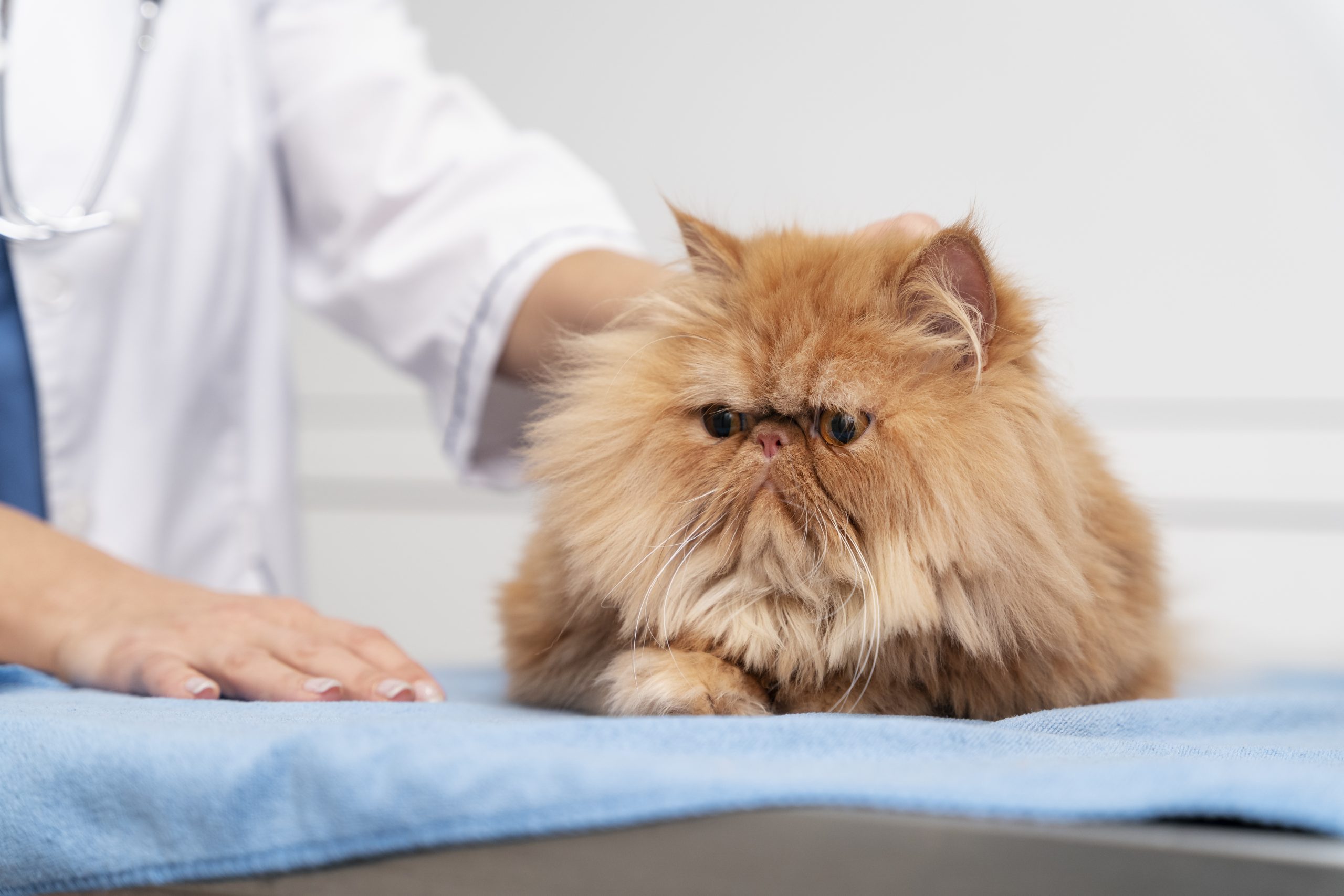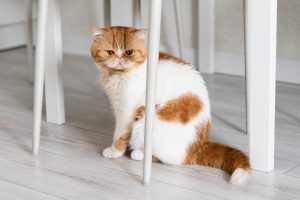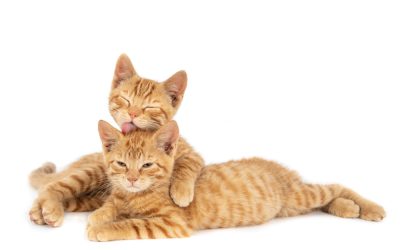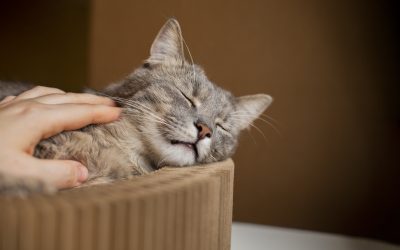Why Is My Cat Throwing Up? Causes & Solutions

Cats are full of surprises, from their midnight zoomies to their sudden love of cardboard boxes. But one thing that often catches cat parents off guard? Vomiting. If you’ve found your kitty throwing up white foam or clear liquid, it can be both confusing and concerning. In this guide, we will walk you through the common reasons your cat may be throwing up, what different types of vomit can indicate, what you can do at home, and when it’s time to call the vet.
Understanding Cat Vomiting: What’s Normal, What’s Not
It’s not uncommon for cats to vomit occasionally. Sometimes, it’s something as simple as a hairball or eating too quickly. However, frequent vomiting or changes in your cat’s behavior can indicate that something more serious is occurring.
Unlike regurgitation (which is passive and happens shortly after eating), vomiting is an active process. You’ll usually notice your cat retching or heaving before anything comes up. That distinction is important to keep in mind. Occasional vomiting isn’t always an emergency, but if it begins happening regularly or if your cat appears unwell in any way, it’s worth examining more closely.
Common Reasons Cats Throw Up
There are a variety of reasons why your cat might vomit, some mild, others more serious. A few of the most common include:
- They Ate Something They Shouldn’t Have: Curious cats may nibble on houseplants, human food, or other items that don’t agree with them.
- Hairballs: Hairballs are a common cause of vomiting, especially in long-haired breeds.
- Sensitive stomach: A sudden change in food or treats can upset their digestive system.
- Illness or infection: Viral or bacterial infections, intestinal parasites, or inflammation like IBD (inflammatory bowel disease) can also be culprits.
- Toxins: Ingesting something toxic, such as lilies or cleaning products, can cause serious problems, including vomiting.
Why Is My Cat Throwing Up White Foam?
If your cat is throwing up white foam, it might look alarming, but it’s often more about when they’re vomiting than what they’re vomiting.
Here are some common reasons for white foam vomit:
- Empty stomach: If it’s been too long since their last meal, your cat might throw up a mix of stomach acid and mucus.
- Gastritis: Inflammation from eating something irritating (or even a chronic issue) can cause foamy vomit.
- Hairballs: If the hairball doesn’t come up immediately, the stomach may simply expel foam instead.
Why Is My Cat Throwing Up Clear Liquid?
Clear liquid usually means your cat is vomiting up water or stomach fluids. Here’s what might be happening:
- Drinking water too quickly: Some cats gulp water too fast, which can upset their stomach.
- Acid reflux: Yes, cats can have reflux, too!
- Possible obstruction: If something is stuck in their digestive tract, vomiting may occur.
When Should I Worry?
Cats can be hard to read, but there are definitely signs that something’s not right. Reach out to your vet if you notice:
- Vomiting more than once a day or several times a week
- Blood in the vomit
- Changes in behavior like hiding, sleeping more, or not eating
- Signs of dehydration—check for sunken eyes, dry gums, or poor skin elasticity
My Cat Vomits Often But Seems Fine. What Can I Do?
If your cat throws up occasionally but otherwise acts normal—playing, eating, purring—it might be something manageable at home. Try:
- Changing their diet slowly: Choose a sensitive-stomach or high-fiber food, especially if hairballs are common.
- Smaller, more frequent meals help avoid an empty stomach and encourage slower eating.
- Fresh water: Always keep clean water available. Try a pet fountain if your cat prefers running water.
Types of Vomiting: What They May Indicate
Understanding the type of vomiting your cat is experiencing can give clues:
- Acute vomiting: Sudden and intense, and may be caused by food, toxins, or infections.
- Chronic vomiting: Ongoing over time, should be linked to allergies, IBD, or even organ disease.
- Regurgitation: Passive, often immediately after eating, and typically looks like undigested food.
Simple Home Remedies to Try
For mild cases, a few gentle remedies can help soothe your cat’s stomach:
- Plain pumpkin puree (not pie filling): High in fiber and great for digestion.
- Ginger tea: A small, cooled amount can help ease nausea (always consult your veterinarian first).
- Hydration help: Encourage more fluid intake—try low-sodium broth or wet food.
How Does Odie Pet Insurance Help If Your Cat Needs Treatment?
Depending on the specific policy, pet insurance can cover the diagnosis, treatment, and management of vomiting in cats.
Reimbursement
This method is the most common for pet insurance companies. You pay out of pocket for the veterinarian bill, and then the insurance company reimburses you for what’s covered under the insurance plan. The steps look like this.
- You pay the vet bill after your cat’s visit.
- You fill out the pet insurance claim form.
- Submit the claim form and other required documentation to the insurer.
- After the claim is approved, you will be reimbursed for eligible expenses.
Odie’s Illness and Injury pet health insurance plan offers comprehensive coverage for your cat.
What Does Odie Pet Insurance Cover?
Pet insurance covers various veterinary expenses, providing financial protection and peace of mind for pet owners. Here are the details of the coverage options offered by Odie Pet Insurance:
Illness & Injury Plan
The Illness & Injury Plan is an all-inclusive insurance plan designed to cover a wide range of medical needs for your pet. This plan includes comprehensive coverage for various illnesses, injuries, and veterinary services. Some of the covered items include:
- Veterinary exams and consultations
- Diagnostics (e.g., X-rays, lab tests)
- Prescribed medications
- Surgeries and hospitalization
- Rehabilitation, acupuncture, or chiropractic treatments
- Medically necessary supplies
- Euthanasia and cremation
The Wellness Plan
The Wellness Plan is a monthly membership that focuses on preventive care and covers routine veterinary services.
- Provides reimbursements for routine care items such as wellness visits (exams and vaccines), testing and parasite prevention, dental cleanings and at-home dental care, vitamins, supplements, and more.
- Through Odie’s partnership with Petivity, a leader in smart pet products and proactive care, Wellness Plan members can also receive reimbursements for Petivity devices and health kits, as well as eligible Purina food and supplements.
- Total reimbursement up to $700 per year.




